Related Research Articles

Citrus is a genus of flowering trees and shrubs in the rue family, Rutaceae. Plants in the genus produce citrus fruits, including important crops such as oranges, lemons, grapefruits, pomelos, and limes. The genus Citrus is native to South Asia, East Asia, Southeast Asia, Melanesia, and Australia. Various citrus species have been utilized and domesticated by indigenous cultures in these areas since ancient times. From there its cultivation spread into Micronesia and Polynesia by the Austronesian expansion ; and to the Middle East and the Mediterranean via the incense trade route, and onwards to Europe.

The mandarin orange, also known as the mandarin or mandarine, is a small citrus tree with fruit resembling other oranges, usually eaten plain or in fruit salads. The tangerine is a group of orange-coloured citrus fruit consisting of hybrids of mandarin orange.
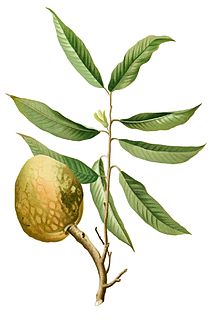
Annona reticulata is a small deciduous or semi-evergreen tree in the plant family Annonaceae and part of the Annonas group. It is best known for its fruit, called custard apple, a common name shared with fruits of several other species in the same genus: A. cherimola and A. squamosa. Its common names include wild sweetsop, soursop and bullock's heart. The fruit is sweet and useful in preparation of desserts, but is generally less popular for eating than that of A. cherimola.
The pars reticulata is a portion of the substantia nigra. Most of the neurons that project out of the pars reticulata are inhibitory GABAergic neurons.
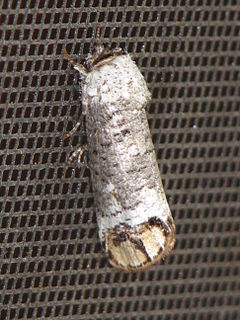
The Cossidae, the cossid millers or carpenter millers, make up a family of mostly large miller moths. This family contains over 110 genera with almost 700 known species, and many more species await description. Carpenter millers are nocturnal Lepidoptera found worldwide, except the Southeast Asian subfamily Ratardinae, which is mostly active during the day.

Phragmataecia is a genus of moths belonging to the family Cossidae. Members of this genus are found throughout the world apart from North America.
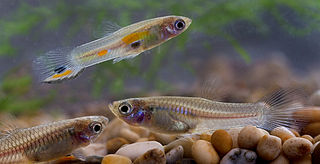
The guppy, also known as millionfish and rainbow fish, is one of the world's most widely distributed tropical fish and one of the most popular freshwater aquarium fish species. It is a member of the family Poeciliidae and, like almost all American members of the family, is live-bearing. Guppies originate from northeast South America, but have been introduced to many habitats and are now found all over the world. They are highly adaptable and thrive in many different environmental and ecological conditions. Male guppies, which are smaller than females, have ornamental caudal and dorsal fins. Wild guppies generally feed on a variety of food sources, including benthic algae and aquatic insect larvae. Guppies are used as a model organism in the fields of ecology, evolution, and behavioural studies.

Lyclene reticulata is a species of lichen moths of the family Erebidae, subfamily Arctiinae. It is found in Queensland, Australia, as well as on Ambon, Seram, Timor, Batchian, Aru, Tobriand, the Louisiade Archipelago and the Dampier Archipelago,

Cumia reticulata, common name the false triton, is a species of sea snail, a marine gastropod mollusk in the family Colubrariidae. Out of this family, there are at least 6 species that are known to feed on blood. This trait of feeding on blood is likely shared by the entire family.

Polyphagozerra coffeae, the red coffee borer or coffee carpenter, is a moth of the family Cossidae. It was described by John Nietner in 1861 and is found in Asia. Records from the Moluccas and New Guinea refer to Polyphagozerra reticulata, which was previously considered to be a synonym of P. coffeae. It is a widespread pest that attacks many plants.
Barringtonia reticulata is a plant in the family Lecythidaceae. The specific epithet reticulata means "like a network", referring to the leaf veins.

The Zeuzerinae are a subfamily of the family Cossidae.
Lebedodes is a genus of moths in the family Cossidae.
Salagena is a genus of moths in the family Cossidae described by Francis Walker in 1865.
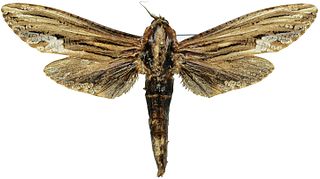
Duomitus is a monotypic moth genus in the family Cossidae described by Arthur Gardiner Butler in 1880. Its only species, Duomitus ceramicus, described by Francis Walker in 1865, is found in Yunnan in China and from southern India and Malaysia to Sumatra, Ceram and New Guinea.
Polyphagozerra is a genus of moths in the family Cossidae.
Indarbela quadrinotata, the bark-eating caterpillar, is a moth in the family Cossidae. It is found in India and Sri Lanka. It was described by Francis Walker in 1856.
Lebedodes reticulata is a moth in the family Cossidae. It is found in South Africa.
Salagena reticulata is a moth in the family Cossidae. It is found in South Africa.
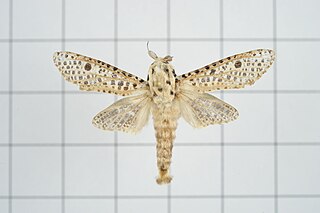
Rapdalus pardicolor is a moth in the family Cossidae. It was described by Frederic Moore in 1879. It is found in Taiwan, India, Thailand and Laos.
References
- ↑ Beccaloni, G.; Scoble, M.; Kitching, I.; Simonsen, T.; Robinson, G.; Pitkin, B.; Hine, A.; Lyal, C., eds. (2003). "Polyphagozerra reticulata". The Global Lepidoptera Names Index . Natural History Museum . Retrieved August 14, 2019.
- ↑ Yakovlev, R.V., 2011: Catalogue of the Family Cossidae of the Old World. Neue Entomologische Nachrichten, 66: 1-129.
| Wikispecies has information related to Polyphagozerra reticulata |
| This article relating to the moth subfamily Zeuzerinae is a stub. You can help Wikipedia by expanding it. |